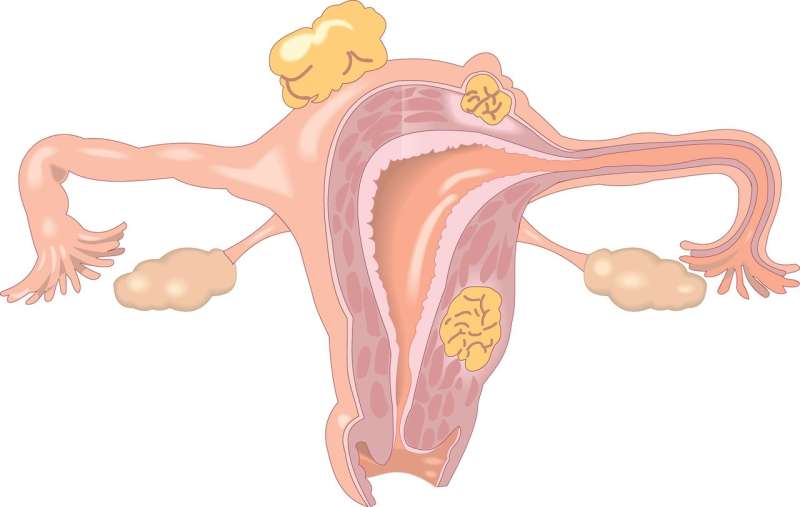New theory may revolutionize treatment of endometriosis


Endometriosis, a disease found in up to 10 percent of women, has been enigmatic since it was first described. A new theory developed by researchers at Simon Fraser University suggests a previously overlooked hormone—testosterone—has a critical role in its development. The research could have direct impacts on diagnosis and treatment of the disease, signaling hope for women with endometriosis worldwide.
The disease is caused by endometrial tissue growing outside of the uterus, usually in the pelvic area, where it contributes to pain, inflammation, and infertility. But why some women get it, and others do not, has remained unclear.
The new research is based on recent findings that women with endometriosis developed, as fetuses in their mother’s wombs, under conditions of relatively low testosterone, compared to women without endometriosis.
According to the researchers’ theory, this low testosterone “programs” the developing reproductive system of women to exhibit the unique suite of traits that is linked with endometriosis, including early menarche, short menstrual cycles, high pain sensitivity, high inflammation, and altered levels of the hormones that control ovulation and the menstrual cycle.
The researchers found their theory to be supported by a remarkable range of data in the literature, from genetics and development to endocrinology, morphology, life history, and evolutionary biology, thus providing the first comprehensive explanation for the traits associated with endometriosis.
The theory can explain almost all symptoms of endometriosis as downstream effects of low early-life testosterone. The findings are presented in two recent papers published in Evolution, Medicine and Public Health, and Evolutionary Applications.
“Low testosterone in early development is the strongest known correlate of endometriosis, and its effects can explain the majority of endometriosis symptoms,” says SFU biological sciences professor Bernard Crespi, a Canada Research Chair and co-author of the work with graduate student Natalie Dinsdale. “What’s more, the new theory has direct implications for endometriosis diagnosis and treatment.”
Crespi notes that testosterone has apparently been overlooked in studies of endometriosis because it is usually regarded as a “male” hormone, even though it is known to have key effects in females as well.
“It is very common for researchers to focus on estrogen as a female hormone, and testosterone as a male hormone, but in reality, these are both critically important hormones in all humans,” says Ben Trumble, an assistant professor at the School of Human Evolution and Social Change at Arizona State University, who was not associated with these studies. “I applaud the authors for moving beyond this binary hormonal blind spot, and studying the full range of steroids that can impact women’s health.”
Source: Read Full Article